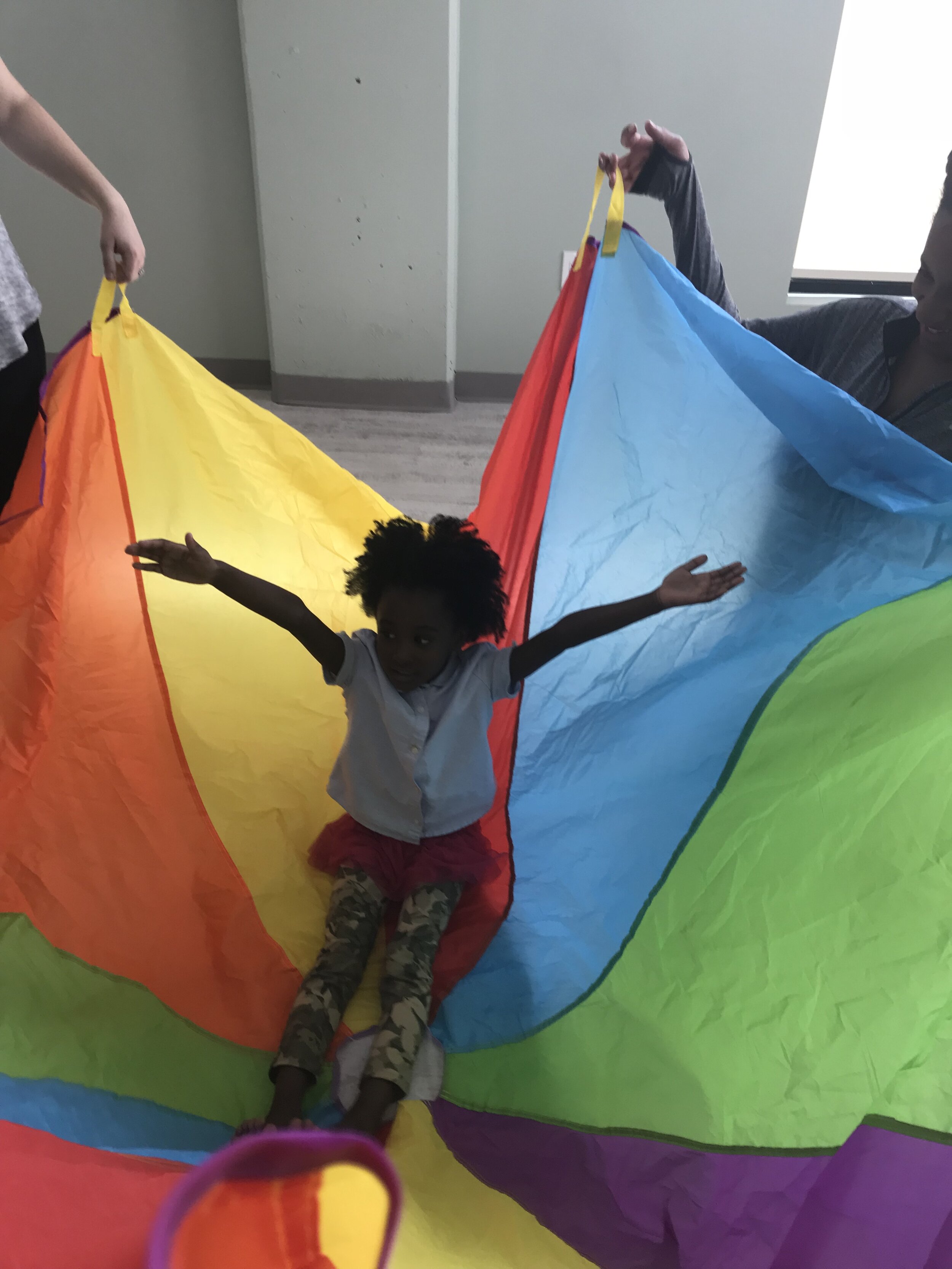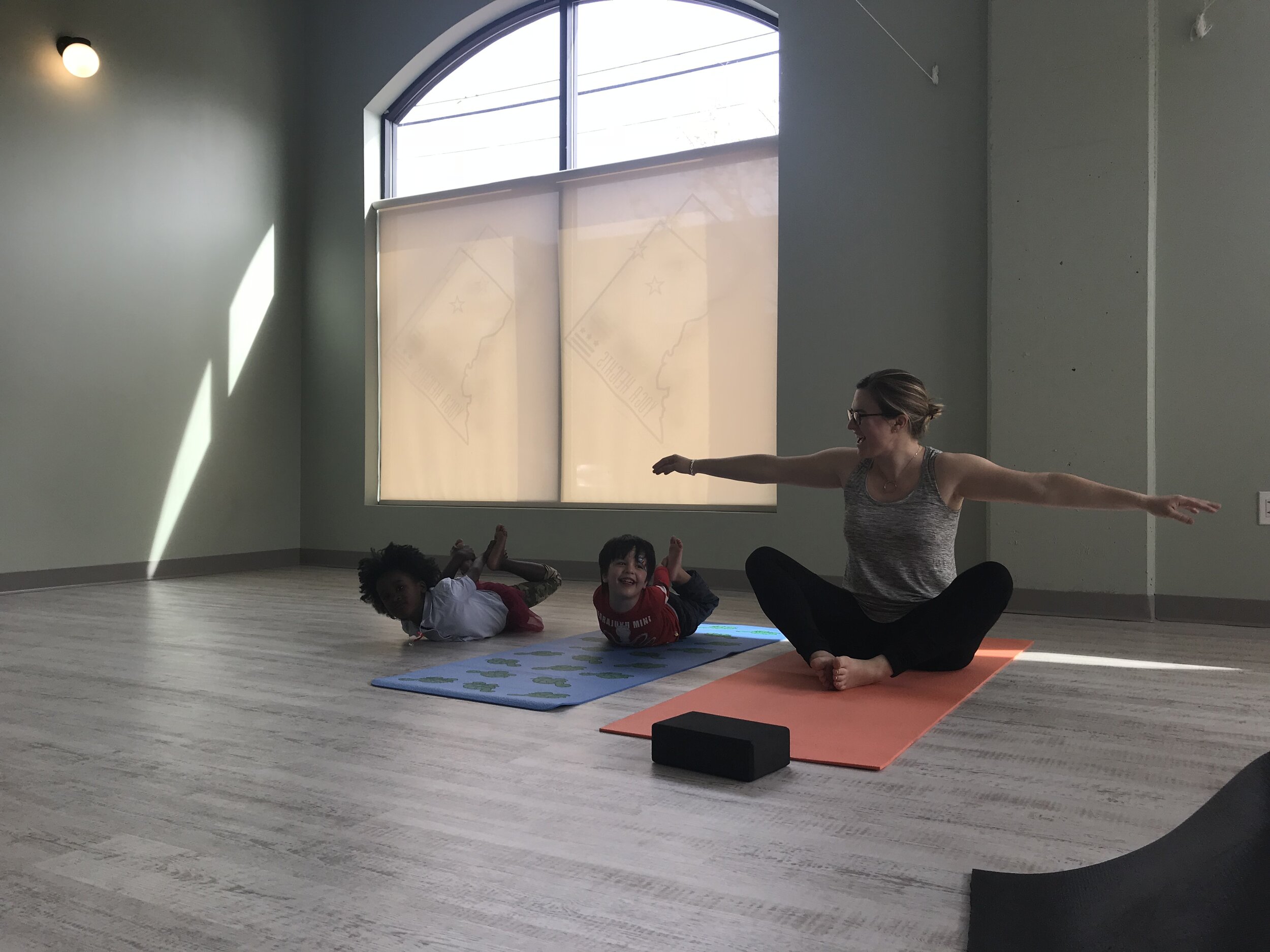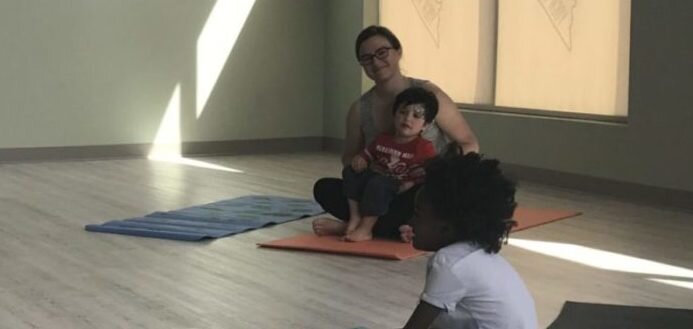Family Yoga 101
By Bretton KeatingThe first time I taught yoga to kids, I had no idea what I was doing. I had been trained to teach vinyasa yoga, in a series derived from the Ashtanga methodology, to adults. In one of the teacher trainings I participated in, a kindred spirit - about 60 years my senior - sat across from me at lunch and we connected about a love for horses and the absurdity of things like "yoga competitions." Suddenly she grew serious and told me, “I see you as a kids' teacher. You should teach yoga to kids.” I blew her off, laughed, and thought “I don’t think I have the patience for kids.” Fast forward a year later and I found myself at a distant relative’s Easter party. These two, adorable little girls kept coming up to me, asking me to show them yoga postures. I would show them one, then they would giggle hysterically and run around, shouting, “Daddy, daddy, look at my tree pose.” I decided maybe I wasn’t opposed to teaching kids, after all. My mother asked if I would come teach a class at her school and I agreed. I studied for about a week, looking up articles about children’s anatomy and coming up with what I thought was a decent-enough sequence for children.
I was so very wrong. After about 20 minutes, I ran out of postures to teach them. I had absolutely zero control over the class. The kids did not stop asking if they could play freeze tag instead and I finally relented. We played freeze tag, but I told them to do postures whenever I said "freeze." I left that class and signed up for a kids yoga teacher training. I am so grateful for Linda Feldman’s Budding Yogis training. Linda taught me to teach kids where they are, meeting them on their level. Kids yoga isn’t so much about alignment and anatomy as it is about planting seeds and creating positive, happy memories. Giving kids space just to be. And don’t we all need that?


Family yoga, in theory, is the same exact thing. It’s as much for parents as it is for children. In family yoga, children and their grown ups are offered time and space for creative and meaningful connection. For everyone involved, it can be challenging, as the most beautiful aspects of life often are. In family yoga, just as in a vinyasa class, we learn to drop expectation and be in the moment, but perhaps to a heightened degree because others are involved. If little Johnny wants to run around or sit in the teacher’s lap during savasana, that’s perfectly fine. If Sarah and her mommy show up to class late because Sarah couldn’t find her pink socks with the bows on them, that’s okay; we’re just glad they came. We offer grace and acceptance over all sorts of levels and energies, knowing that each child and parent in class will have a totally different experience based on what’s happening in the moment. One of my favorite aspects of teaching yoga to kids and families is that we learn largely through games, but there are no winners. For me, this was revolutionary. It’s completely counter-cultural—from a young age we’re taught to value winning and the ‘sticker system,’ using rewards as feedback, which we then internalize as validation. Eventually we graduate kindergarten and the stickers turn into grades turn into job promotions turn into perfectly hair-braided children earning those very same stickers that taught us how to climb the ladder we call 'life' to begin with. Granted, at the end of my yoga classes, I do often give stickers—but everyone gets one, because we all did our very best. Every single time. This is a big piece of what yoga teaches us - that each of us is doing our very best, we are already whole and complete, and we don’t need an external reward-recognition feedback loop in order to self-validate. In kids yoga, we have no winners when we play the games, because the point of the game isn’t winning. The point is being present, enjoying the moment, and exploring the shapes and sounds and feelings held in our bodies.
One of my favorite aspects of teaching yoga to kids and families is that we learn largely through games, but there are no winners. For me, this was revolutionary. It’s completely counter-cultural—from a young age we’re taught to value winning and the ‘sticker system,’ using rewards as feedback, which we then internalize as validation. Eventually we graduate kindergarten and the stickers turn into grades turn into job promotions turn into perfectly hair-braided children earning those very same stickers that taught us how to climb the ladder we call 'life' to begin with. Granted, at the end of my yoga classes, I do often give stickers—but everyone gets one, because we all did our very best. Every single time. This is a big piece of what yoga teaches us - that each of us is doing our very best, we are already whole and complete, and we don’t need an external reward-recognition feedback loop in order to self-validate. In kids yoga, we have no winners when we play the games, because the point of the game isn’t winning. The point is being present, enjoying the moment, and exploring the shapes and sounds and feelings held in our bodies. One more thought, and then I’ll stop rambling. In the Ashtanga community, there is a joke that parenting is the elusive “7th series.” This joke refers to the fact that, because the series get progressively harder and there is no 7th series, that parenting is the hardest form of yoga there is. I think that can be said of the reverse, too—being parented, and relationships with others in general, really, is challenging. This is where the tools become essential. Because if you can do fancy-looking postures on your mat, but you cannot approach another human being with kindness, well, then, is the yoga really working? The first thing we learn in kids yoga is to “love ourselves, and everybody else.” So the 7th series, in essence, comes down to the root, to the basics, to the fundamentals of practice—learning to love ourselves, and everybody else. Which is often easier said than done. Which is also, ultimately, why we need to practice at all.See you on your mat(s)!With love,Bretton
One more thought, and then I’ll stop rambling. In the Ashtanga community, there is a joke that parenting is the elusive “7th series.” This joke refers to the fact that, because the series get progressively harder and there is no 7th series, that parenting is the hardest form of yoga there is. I think that can be said of the reverse, too—being parented, and relationships with others in general, really, is challenging. This is where the tools become essential. Because if you can do fancy-looking postures on your mat, but you cannot approach another human being with kindness, well, then, is the yoga really working? The first thing we learn in kids yoga is to “love ourselves, and everybody else.” So the 7th series, in essence, comes down to the root, to the basics, to the fundamentals of practice—learning to love ourselves, and everybody else. Which is often easier said than done. Which is also, ultimately, why we need to practice at all.See you on your mat(s)!With love,Bretton
Take class with Bretton: Wednesday at Takoma – 7:45 pm (Intermediate Flow)Thursday at Takoma – 5:00 pm (Half-Price Flow)Saturday at Takoma – 12:30 pm (Ashtanga) and 3:30 pm (Family Yoga)Sunday at Georgia Ave. – 3:45 pm (Pre/Postnatal Flow)

